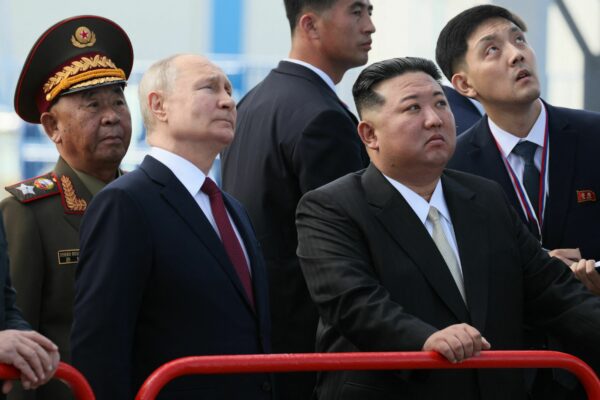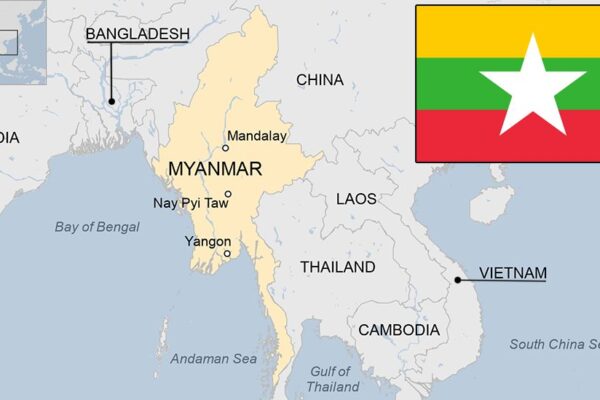Nguyen Phu Trong left Vietnam’s Communist Party ripe for strongman rule
On July 19, the Vietnamese Communist Party announced the death of its general secretary, Nguyen Phu Trong. The previous day, it announced that Trong, 80, ostensibly the most powerful politician in the country, had been relieved of his duties for health reasons. He had missed several key meetings in recent months, and even when he did attend, he appeared shaky and unwell. He suffered a stroke a few years ago but seemingly bounced back. However, his near-unprecedented third term in office has been cut short. To Lam, the public security minister and promoted to state President last month, will now assume Trong’s duties. Having led the party since 2011, Trong attempted to reinvigorate an institution that, by the early 2010s, had become bogged down by individual rivalries, profit-seeking, and self-advancement. A man rides past a poster for the 13th National Congress of the Communist Party of Vietnam in Hanoi on Jan. 22, 2021. (Nhac Nguyen/AFP) Corruption was so rampant the public was mutinous. Ideology and morality had fallen by the wayside. Pro-democracy movements threatened its monopoly on power. The private sector was not just fantastically wealthy, but desired more political power. But in what condition does Trong leave the institution he sought to fix? Externally, its monopoly on power is safer. It has increased repression of activists and democrats while appeasing the public through its high-profile takedown of the corrupt. The private sector has been constrained, too, so poses no threat to the party’s political authority. The economy has insulated the party from any meaningful repercussions from the West over human rights. ‘Blazing Furnace’ Within the Communist Party, however, Trong leaves behind a mess. Lam, as public security minister, and Prime Minister Pham Minh Chinh, artfully used Trong’s signature “Blazing Furnace” anti-corruption campaign to advance their own interests, effectively purging anyone who might rival them for Trong’s job in 2026. More Politburo members have been sacked than at any time in memory. Two presidents have “resigned” in as many years. The Politburo is now filled mostly with military personnel and securocrats, the only two factions – and sometimes rivals – left with power. Lam, if he does formally become acting general secretary, which the Politburo will have to vote on, is in a prime position to maintain the job in 2026. One imagines he has very different ideas about the nature of the Communist Party than Trong. Early in the anti-corruption campaign, Trong remarked that he did not want to “break the vase to catch the mice.” That metaphor implied that tackling corruption should shield a delicate Communist Party, not smash it to pieces. Vietnam’s President To Lam, front right, and Cambodia’s Defense Minister Tea Seiha, back right, pay their respects in front of honor guards at the Independence Monument in Phnom Penh on July 13, 2024. (Tang Chhin Sothy/AFP) However, in his quest to rid corruption from a corrupt institution, he eroded almost every check the Communist Party of Vietnam had to prevent a supreme leader figure from rising to the top. Trong violated the three major “norms” that the party introduced in the early 1990s. Politburo members were expected to retire at 65, and individuals could only occupy the most senior positions for a maximum of two terms. More importantly, no one person could hold at the same time two of the four most powerful positions: General Secretary, State President, Prime Minister, and Chair of the National Assembly. This “four pillar” (tu tru) system created a form of succession plan. Regular reshuffles and a separation of powers amongst the political elite would prevent the Communist Party from tilting towards dictatorship. Shattering the norms The norms created a structure in which politicians could fight over policies, often brutally, but without the entire apparatus collapsing because of division. There could be a regular rotation between different factions and geographic networks, meaning no one group was ascendant for too long. Hanoi called this “democratic centralism.” Of course, it’s not democracy, but it’s a form of pluralism that, in theory, had prevented the party from descending into dictatorships like North Korea, Cuba, or China under Xi Jinping. Trong broke every one of these rules. Between 2018 and 2021, he held the posts of party general secretary and state president simultaneously, the first person to do so since 1986. (Lam seems likely to repeat that.) Trong passed away during his third term as party chief, the first leader since Le Duan to have that record. He not only constantly had the party flout retirement-age limits for himself – he should have stepped down in 2021, if not earlier – but such exemptions have been handed out like confetti during his tenure. Vietnam’s Communist Party General Secretary Nguyen Phu Trong addresses a press conference after the closing ceremony of the Communist Party of Vietnam 13th National Congress in Hanoi on Feb. 1, 2021. (Manan Vatsyayana/AFP) At the same time, his anti-graft campaign has centralized power among an increasingly small number of Politburo members. Provincial party politics have been purged and constrained to give more power to the central party apparatus. The party dominates the government. The public security ministry is all-seeing. This was always going to happen. How else do you clean up an uncleanable organization in which power flows up and discipline is enforced only by those above you? The campaign increases the necessity of one section of the party to maintain power indefinitely. Who designates what is the true morality and which cadres are truly moral? Well, a certain clique of the party running the anti-corruption campaign In one speech on the theme, Trong urged the party to “strengthen supervision of the use of the power of leading cadres, especially the heads, push up internal supervision within the collective leadership; make public the process of power use according to law for cadres and people to supervise.” The purge is designed to enforce the view that no one has absolute power above the party. Anyone who uses the power must serve the…








